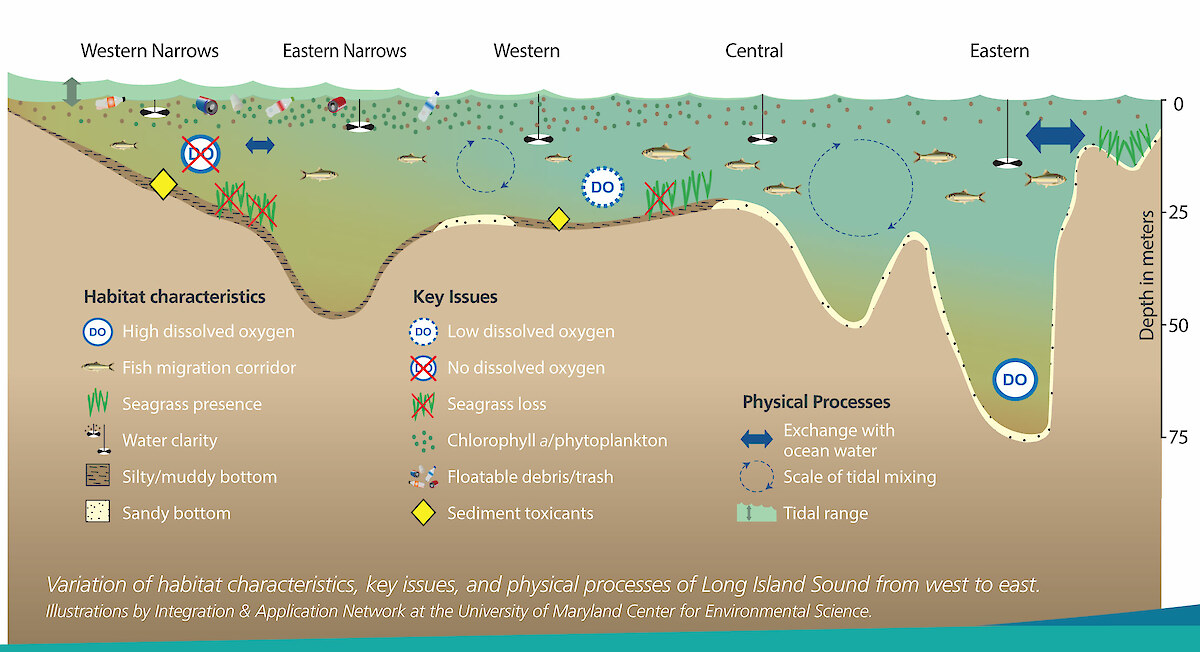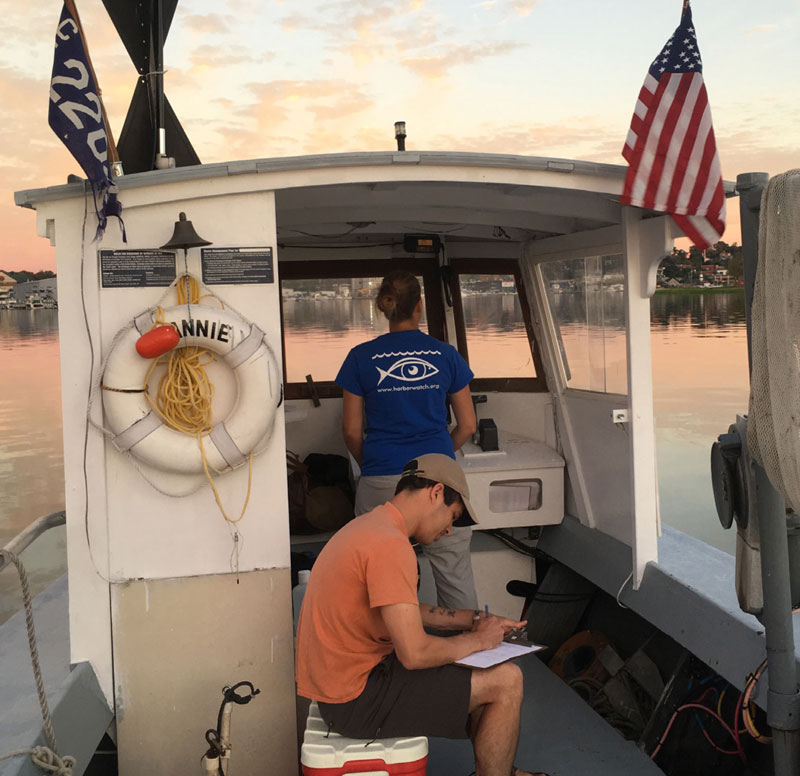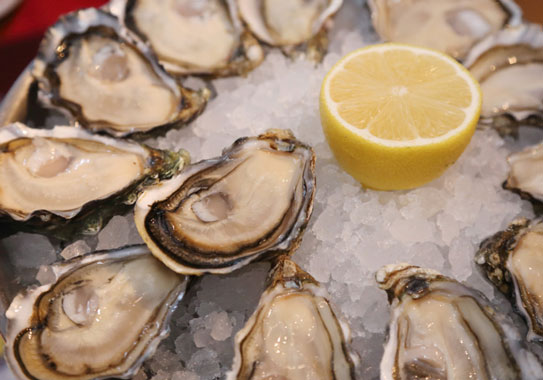 Long Island Sound is our nation’s great urbanized estuary. The primary pollutant that threatens the current and future health of the Sound is excess nutrients, particularly nitrogen, entering the water from our wastewater treatment plants, septic systems, fossil fuel burning, and fertilizer use. High nitrogen loads can overfertilize coastal waters, causing the growth of excess seaweed and phytoplankton. Oxygen is consumed as these plant-like organisms and the animals that feed on them respire, die, and decompose; in some cases causing a perilous low oxygen condition, called “hypoxia.” High nutrient levels can lead to fish die-offs, harmful algae blooms, loss of coastal marshes, and increased ocean acidification which is harmful to shellfish.
Long Island Sound is our nation’s great urbanized estuary. The primary pollutant that threatens the current and future health of the Sound is excess nutrients, particularly nitrogen, entering the water from our wastewater treatment plants, septic systems, fossil fuel burning, and fertilizer use. High nitrogen loads can overfertilize coastal waters, causing the growth of excess seaweed and phytoplankton. Oxygen is consumed as these plant-like organisms and the animals that feed on them respire, die, and decompose; in some cases causing a perilous low oxygen condition, called “hypoxia.” High nutrient levels can lead to fish die-offs, harmful algae blooms, loss of coastal marshes, and increased ocean acidification which is harmful to shellfish.
In response to the threat from excess nutrients, over the past decade communities around the Sound have made a substantial investment in nutrient removal technology at wastewater plants in New York and Connecticut, as well as an investment in tracking the response in the Sound through water quality monitoring. The good news is that this investment appears to be working. Dissolved oxygen levels have generally improved in the western Sound over the past decade, but there is still work to be done.
With continued leadership from the U.S. Environmental Protection Agency (EPA), state and local governments around the Sound are currently working on additional measures to continue reducing nitrogen inputs. Please review the back page for actions that individuals, families, and businesses can take to help with this effort.

New monitoring initiative for your bays and harbors
 Though they are not depicted in this report card, bays and harbors around the Sound are critically important.
Though they are not depicted in this report card, bays and harbors around the Sound are critically important.
The bays and harbors of Long Island Sound – home to many beaches, parks, and marinas – are often the places where the public comes into direct contact with Sound waters. Each bay and harbor (“embayment”) has its own unique hydrology influenced by a number of factors including depth, tidal flushing, and the presence of tributary streams and rivers. Measuring water quality conditions in embayments requires a different approach than the one used to measure open water conditions. This Report Card only reports on open water conditions.
To learn more about the health of Sound bays and harbors, the Long Island Sound Funders Collaborative and Save the Sound have initiated a Sound-wide embayment study. A coalition of interested monitoring groups, scientists, and representatives of regulating agencies are collaborating on the study with the goal of gathering “apples-to-apples” data from a network of monitoring groups around the Sound. The study is designed to measure human impact on, and the relative health of, the bays and harbors of Long Island Sound. Standard Operating Procedures are provided and must be followed in their entirety by participating groups to ensure consistent comparisons of embayments.
The study was piloted by three groups in the 2016 summer monitoring season and is open to participation by any interested, qualifying group or community on the Sound starting in the 2017 monitoring season. The findings of the embayment study – to be published in future Report Cards – will further deepen our understanding of the Sound and inform our actions to preserve and protect it.
Healthy waters, healthy communities
 During the recreational season fecal bacteria is measured at the 200+ beaches that line the Sound to determine if the water quality meets the EPA guidelines for safe swimming. Exposure to fecal bacteria in recreational water can lead to a variety of illnesses including viral, parasitic, and bacterial infections.
During the recreational season fecal bacteria is measured at the 200+ beaches that line the Sound to determine if the water quality meets the EPA guidelines for safe swimming. Exposure to fecal bacteria in recreational water can lead to a variety of illnesses including viral, parasitic, and bacterial infections.
Fecal bacteria levels are also measured in waters where shellfish are harvested for human consumption because consuming the bacteria in shellfish can lead to illness. The loss of beach days and shellfish harvests has a direct negative impact on local economies and livelihoods around the Sound. Investing in our wastewater infrastructure keeps our beaches and shellfish healthy and accessible for public enjoyment.
This Report Card does not include data or grades for bacteria levels in Sound waters. For data on bacteria levels at Sound beaches, visit SoundHealthExplorer.org.
